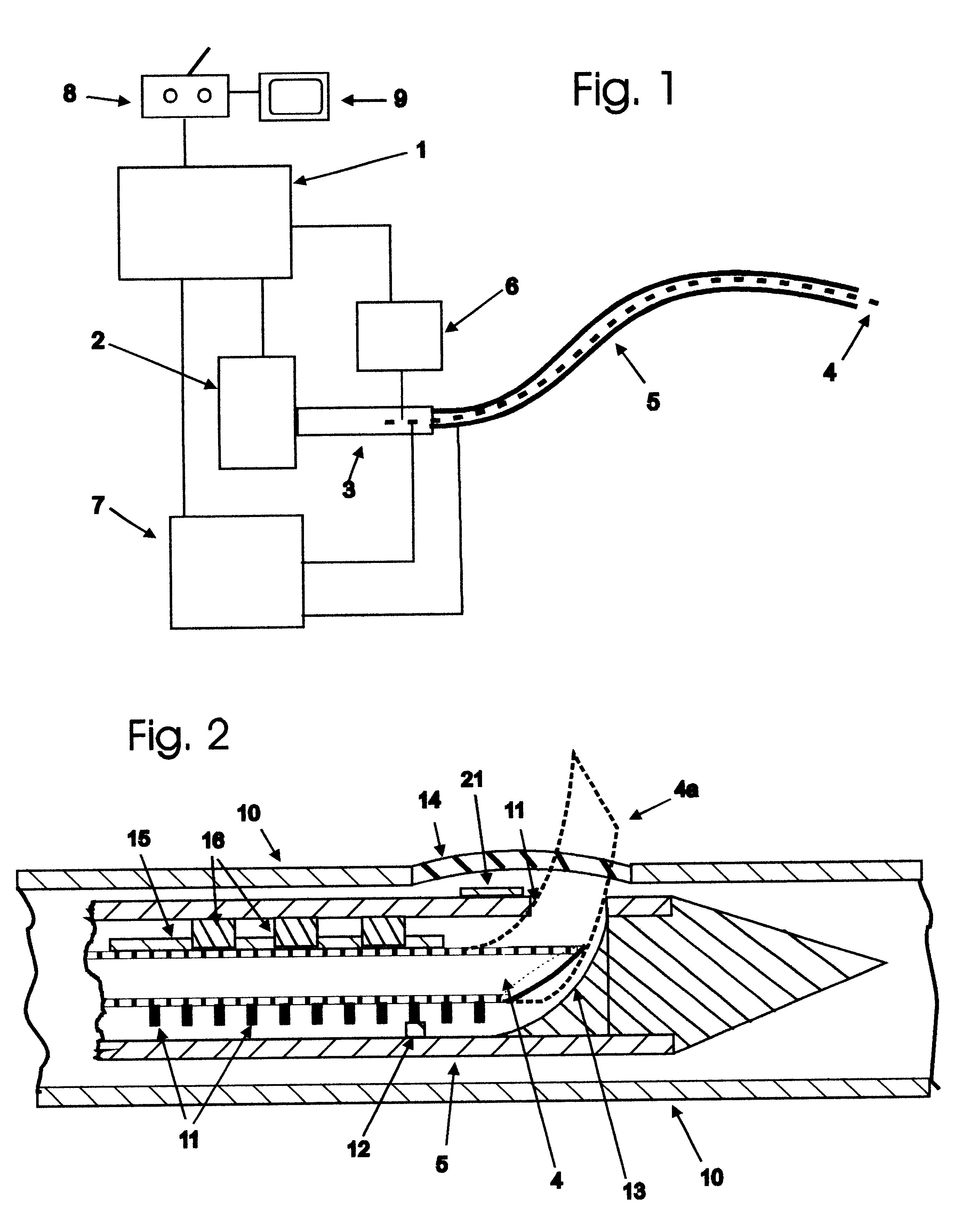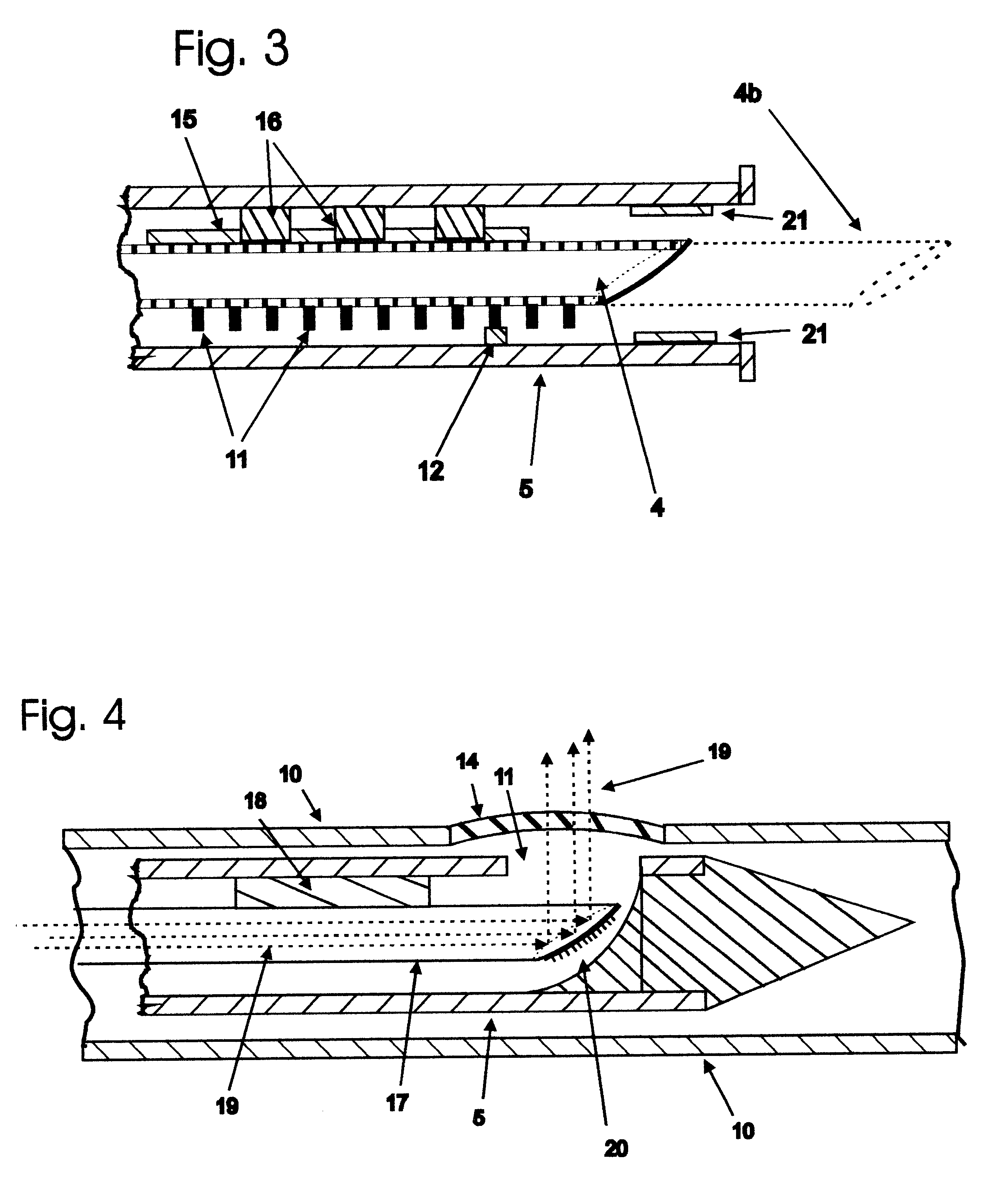Another approach to treating atrial
fibrillation would be to create a network of pathways, for example in a
grid pattern, that would in effect
short circuit the impulses or isolate them into small areas, before they are able to propagate sufficiently to cause
fibrillation. This
grid pattern would be imparted into the walls of the fibrillating atria. Another pattern might be an array of spiral patterns that would act as a
capacitor and dissipate the unwanted impulses. These spiral patterns could be connected to each other or disconnected or some of both. Interleaved X's or spider patters might also be effective.
The preferred material for impregnation are particles or molecules of carbon 60, or other forms of carbon including
activated carbon, and other organic materials, such as conductive plastics, that are conductive and that are at the same time biologically compatible with the heart
muscle. Other preferred materials are particles of any inorganic conductive material that is biologically compatible, for example iron, stainless steel,
nickel titanium (nitinol) and oxides of these metals. However, Carbon 60 is thought to be the best material as it is relatively
inert, conductive and has high
lubricity which would minimize
irritation from the movement of the heart
muscle. Other forms of carbon, iron and
iron oxide are the principal other preferred materials due to their
conductivity and bio-compatability. Radio-opaque dies can be added to the material to be impregnated to allow the surgeon to view the progress of the operation. If these materials are applied with a
syringe or similar device, they will be suspended or dissolved in a
carrier fluid such as
saline water, or other suitable
carrier fluid used in other pharmacological preparations.
Rather than injecting carbon materials into the tissue, the tissue itself could be carbonized by the application of photo-
thermal energy to the tissue. This preferred embodiment of the invention would involve the delivery of the photo-
thermal energy, preferably produced by a
laser, delivered directly or particularly in the case of an interluminal operation, down an optical fibre to the area of the
heart wall that requires
carbonization. An
infrared or
near infrared laser would probably be best for
carbonization, but other frequencies would also be suitable. It may be beneficial to use one
laser frequency to produce the holes and another to carbonize the lumen of the hole so formed. In this case a
tunable laser might be utilized or two lasers optically linked by means well known to the art. The optical fibre would be of such a
diameter and the
laser pulses of such energy to produce holes of desired
diameter and depth to effect the purpose. In some cases holes would not be required in which case surface and near surface
carbonization could be effected by using lower energies. Using this method the
electrical impulse of the heart need not travel down the axis of an individual tract or hole, but depending upon the depth of the holes and the arrangement of the array of holes, the
electrical impulse could travel normal to the axis of the holes. Additional carbon or conductive material could also be introduced into the holes so created to further increase the
conductivity of the
heart wall.
While the method is described mainly in the context of reducing
fibrillation, AV and SA block, it should be appreciated that this method allows one to change the electrical properties of the heart for other purposes. For example, heart pace makers could be made more effective and durable if conductive tattoos were impregnated into the tissue of the heart using the methods described. Using such methods pacemakers might be introduced into the patient's vascular
system, e.g. the
femoral vein, percutaneously or by way of a
cut-down, advanced therein into the heart and implanted into the heart with electrodes tattooed in the
heart walls.
 Login to View More
Login to View More  Login to View More
Login to View More 


